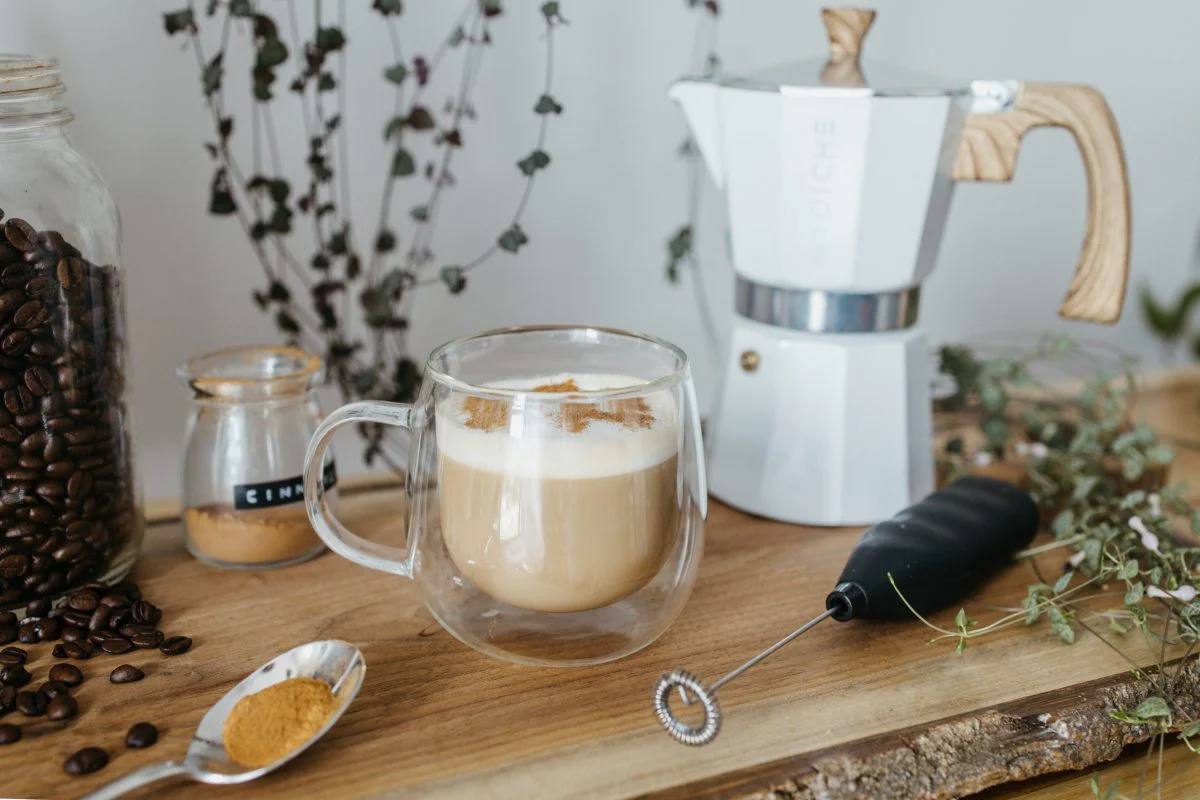For many coffee lovers, a latte is the ultimate comforting drink—rich, creamy, and satisfying. While it might seem like a specialty you can only enjoy at a coffee shop, making a latte at home is entirely possible with the right tools and techniques. Not only will this save you money, but it also lets you customize your drink exactly how you like it.
In this guide, you’ll learn step-by-step how to craft the perfect latte from the comfort of your own kitchen.
What Is a Latte?
A latte, short for caffè latte in Italian, means “milk coffee.” It’s a blend of espresso and steamed milk, topped with a thin layer of milk foam. The typical ratio is one part espresso to three parts steamed milk, creating a smooth and mellow drink that highlights the flavor of the coffee without overwhelming it.
Essential Tools to Make a Latte at Home
To create a great latte, you’ll need a few basic tools. Some are optional but highly recommended if you want to replicate a café-quality drink.
1. Espresso Machine (Recommended)
An espresso machine is the gold standard for making lattes. It allows you to brew a strong espresso shot and steam milk with a steam wand.
2. Alternative Options Without an Espresso Machine
If you don’t have an espresso machine, don’t worry! You can still make a close version using:
- A Moka pot – Makes strong coffee that resembles espresso.
- Aeropress with espresso filter cap – Produces a rich, concentrated coffee.
- French press or drip coffee maker – Not ideal but can work for a latte-like drink if brewed strong.
3. Milk Frother
A handheld milk frother or an electric frother will help create the microfoam needed for a latte. Some frothers also heat the milk.
4. Milk Steaming Pitcher
If using a steam wand, a stainless steel pitcher helps control the steaming process.
5. Thermometer (Optional but Helpful)
Keeping milk between 55°C and 65°C (130°F to 150°F) preserves its sweetness and texture.
Choosing the Right Coffee and Milk
Coffee Beans
- Medium or dark roast works best for lattes, offering a robust flavor that complements the milk.
- Freshly ground coffee enhances the taste significantly.
Milk Types
- Whole milk creates the creamiest texture.
- Oat milk, almond milk, or soy milk are excellent dairy-free alternatives but choose barista versions for better froth.
Step-by-Step: How to Make a Latte at Home
Step 1: Brew the Espresso
- If you have an espresso machine, pull a double shot of espresso (about 2 oz or 60 ml).
- With a Moka pot or Aeropress, brew a concentrated coffee following the manufacturer’s instructions.
Step 2: Heat and Froth the Milk
- Pour cold milk into your pitcher (about 150–200 ml for one cup).
- Use a steam wand to heat the milk. Submerge the tip just under the surface to create microfoam, then lower it to heat the milk evenly.
- If using a frother, heat the milk first (if the frother doesn’t heat it) and then froth until smooth and creamy with tiny bubbles.
Step 3: Combine Espresso and Milk
- Pour the espresso into your cup.
- Gently pour the steamed milk over the espresso, holding back the foam with a spoon if you prefer less foam.
- Spoon the remaining microfoam on top for that signature latte finish.
Techniques for Better Results
Perfecting Milk Froth
- Aim for microfoam, which has tiny, silky bubbles rather than big, airy ones.
- Don’t overheat the milk—too hot, and it will lose sweetness and texture.
Latte Art (Optional)
- Once you master frothing, try simple latte art like a heart or rosette. Start pouring from a higher distance and lower the pitcher as the cup fills.
Customize Your Latte
- Add flavors: Vanilla, caramel, or hazelnut syrups.
- Make it iced: Pour espresso over ice and add cold frothed milk.
- Try different milk types: Each milk offers a unique taste and texture.
Common Mistakes to Avoid
- Burning the milk: Always monitor the temperature.
- Incorrect coffee-to-milk ratio: Too much milk can dilute the coffee flavor.
- Using the wrong grind: For espresso, the grind must be fine. If using a Moka pot or Aeropress, adjust accordingly.
Benefits of Making Lattes at Home
- Cost-effective: Save money compared to daily café visits.
- Convenient: Enjoy a fresh latte anytime.
- Personalized: Control sweetness, milk type, and strength.
- Sustainable: Less waste from disposable cups.
Final Thoughts
Making a latte at home is a rewarding skill that’s easier than it seems. With a little practice and the right tools, you can enjoy café-quality lattes anytime you want. Whether you prefer it hot, iced, dairy-free, or flavored, mastering the latte at home opens up a world of delicious coffee possibilities.
